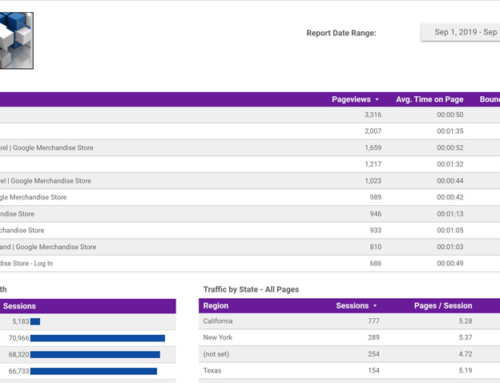 As someone who loves to learn something new every chance I get, it’s exciting to see rapid advances in technology are connecting more people every day. This is also leading to a broader set of creative minds coming together to solve complex problems and inventing entirely new products and services. A lot of information is being generated as well, at times more than we can process, so we’re having to invent new ways to manage it all. Just as important is the need for up-to-date and relevant information. Secure, reliable and fast platforms to support this are required as well. We’ll be discussing both in this article.
As someone who loves to learn something new every chance I get, it’s exciting to see rapid advances in technology are connecting more people every day. This is also leading to a broader set of creative minds coming together to solve complex problems and inventing entirely new products and services. A lot of information is being generated as well, at times more than we can process, so we’re having to invent new ways to manage it all. Just as important is the need for up-to-date and relevant information. Secure, reliable and fast platforms to support this are required as well. We’ll be discussing both in this article.
Content Areas
1. You’ve worked so hard to get your website up and running, and to get visitors to visit the site.
Keep them coming back with up-to-date information. For most websites, visitors aren’t likely to visit a third time if nothing has changed.
No one knows your business better than you and that makes you the best person to tell your story. It should not be left to random strangers or even Google’s artificial intelligence (AI) systems. Part of your story should include the latest information about your business such as industry news, tradeshows, product launches, success stories and changes within the company itself. Every page on your site exists for a reason and should be reviewed on a schedule. Keep in mind that if it’s not interesting to you, it probably isn’t interesting or valuable to most other people.
2. From an SEO perspective, search engines survive by having large volumes of relevant information and they thrive on having new information as well. The quote above by Katie Jacobs Stanton, the Chief Marketing Officer (CMO) of Color Genomics and former Vice President of Global Media at Twitter, does a great job of capturing the importance of up-to-date information in a constantly evolving global economy. This also highlights the importance of writing for your target audience instead of search engines since it’s still people who buy your products and services. When search engines see that you’re providing a lot of useful and current information, you’re likely to gain some SEO credibility, and that is always a good thing.’
3. A website’s home page can be thought of as a storefront, even if you don’t sell products or services directly through your website. People window shop websites similarly to how people window shop physical businesses. That first impression is very important and usually should share a significant volume of current information. Keeping current information on the home page requires change and people notice change so why not make sure what they see is up-to-date? Summarizing and linking to other pages of your site can help visitors learn quickly what they should expect to find and encourage them to engage more deeply.
4. Contact pages and contact information should absolutely be kept current. No one likes to tell a customer “so-and-so doesn’t work here anymore”, so it’s a good idea to make sure customers/prospects don’t get put in that position. Be sure to keep contact form recipient email addresses current, especially if the form is assigned to a specific person. Don’t forget to keep phone numbers and addresses current as well. If people can’t easily call or find you, then it’s likely they’ll think working with you will also be difficult. No one has time for that.
5. If your site has a Team page, be sure to update that information regularly. Why should you have a Team page? Businesses succeed or fail based on relationships between people, so take the first step toward introducing yourselves. People’s appearances change and keeping their photos current makes them more recognizable to office visitors and at networking events. Has an employee completed an industry-specific certification? Equally important is to make sure new employees are listed and that title changes are kept current as well. . Since search engines like change, this is yet another opportunity to feed that beast.
6. About pages typically tell a story about your company. This story changes over time so this should be reflected on the About page as well. Has your company achieved a new milestone or added a new location? Be sure to share that on this page. The About page can be beneficial by sharing your company culture. It doesn’t need to be too formal, which means it’s a great place to let the world know how easy it can be to do business with you or how much fun it can be to work with you. Even the tone in which your website is written allows site visitors to infer a lot about your organization: Formal or informal, stodgy or adventurous, sage or youthful and so on.
“If you don’t tell your story, someone else will.” – Carmine Gallo, author
7. Blogs should be updated on a regular schedule whether daily, weekly or monthly. Also a blog is a great way to connect with existing and potential customers to provide them timely and relevant information. A bonus is that the more you write, the better you get at sharing your expertise, and the more you write the better you get at sharing the value you and your company can deliver. Blogging delivers an easy way to add value by addressing challenges that your customers are facing. Blog writing helps you think outside of your daily routine about your industry, newsworthy topics and how you are serving your customers. For search engine optimization (SEO), well-written and well-maintained blogs can provide large volumes of new information that give search engines more to work with to help put you in front of a larger, yet more focused audience.
8. Videos typically require quite a bit more time, cost and effort to update, but that shouldn’t make it an area to put on the back burner or ignore completely. According to https://fortunelords.com/youtube-statistics/, 300 hours of video are uploaded to YouTube every minute and almost 5 billion videos are watched on YouTube every single day. People will tolerate below excellent video quality as long as the audio quality is top-notch. Outdated content, on the other hand, is probably not something most people appreciate. The daily number of video views on SnapChat are more than 10 billion. Between YouTube and Snapchat, there are 15 billion video views daily and both of those platforms receive a tremendous amount of new content every day.
Software Areas
 Considering one of the most well-known hackers in the world, Kevin Mitnick, keeps his “stuff” updated, keeping your website software up-to-date should be considered essential. When software developers provide updates, they typically consist of new or enhanced features, bug fixes, security patches and performance improvements.
Considering one of the most well-known hackers in the world, Kevin Mitnick, keeps his “stuff” updated, keeping your website software up-to-date should be considered essential. When software developers provide updates, they typically consist of new or enhanced features, bug fixes, security patches and performance improvements.
9. The foundation of your website is generally referred to as the “core”. For example, WordPress is considered core software since you can’t have a WordPress website without it. As of December 2017, the WordPress core consisted of 565,985 lines of code, which is an increase of over 90,000 lines of code from the previous year. That’s a lot of complexity and potential security fixes that were implemented. Beyond security patches, many bug fixes were implemented that improve the stability and operation of the WordPress core files. The WordPress release history can be reviewed at https://wordpress.org/news/category/releases/ to put this into perspective.
10. Whenever there is an update to the WordPress core, the theme your site relies on for the beautiful presentation of the content, depending on how tightly integrated with WordPress, will most likely require an update as well. As of this writing, Avada— one of the most popular themes—is made up of 1,373 files and is usually updated anytime WordPress is updated. Additionally, between WordPress updates, Avada theme updates are also released as needed.
11. The final major component most website owners have control over are the third-party plugins that provide added or custom functionality to the website. These plugins should be checked for updates at least along with WordPress core updates. When selecting plugins for your website, it’s important to take into consideration how long ago the plugin was last updated, how many installations there are, and what version of WordPress the plugin was tested with. This example below reflects an extremely popular plugin, Contact Form 7, that is extremely well-maintained and is tested with the latest version of WordPress.
12. An area you may not have control over is the programming language versions available from your web host. WordPress cannot function without PHP and, while not usually necessary to be kept on the latest version, if you’re web host doesn’t provide support for the latest release, it’s possible they’re not keeping current with security and performance issues. When a new version of PHP is released, it also brings significant performance improvements. According to https://www.openhub.net/p/wordpress, PHP represents 57 percent of the WordPress core code and represents 30 percent of JavaScript with the remainder in four other languages. Make sure your web host is passionate about working with the latest technology and provides a helping hand. If one of those conditions is not true, then talk to us about switching to the host we rely on – WP Engine.
We’ve covered some of the most important areas of your website that need to be kept up-to-date and the reasons why. Every visitor to your site needs to be fed current information for specific reasons. Whether it’s helping a new customer feel welcome, a search engine that needs more food or a hacker that needs to be stopped in his tracks, your site should always try to deliver what is needed.








